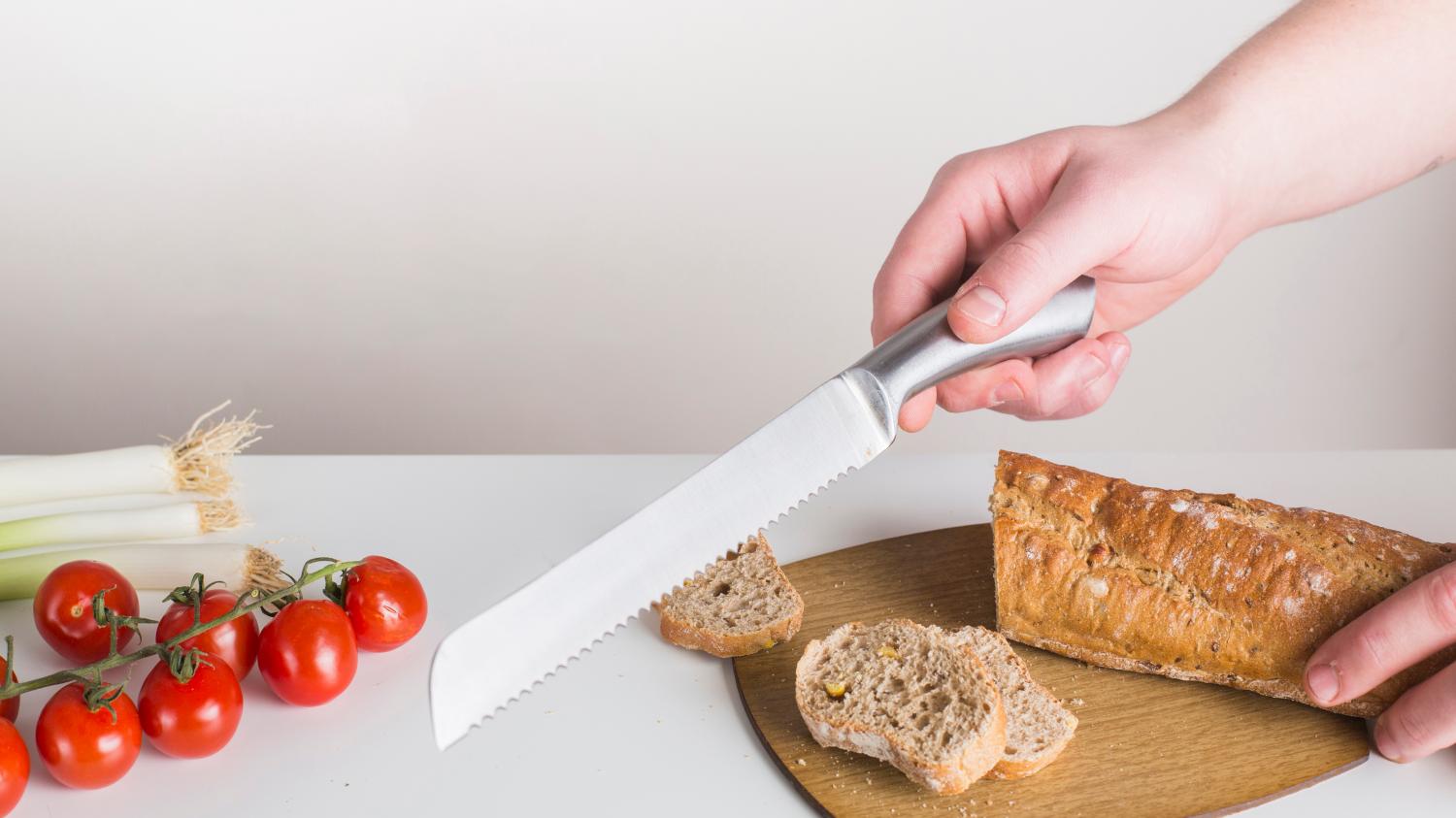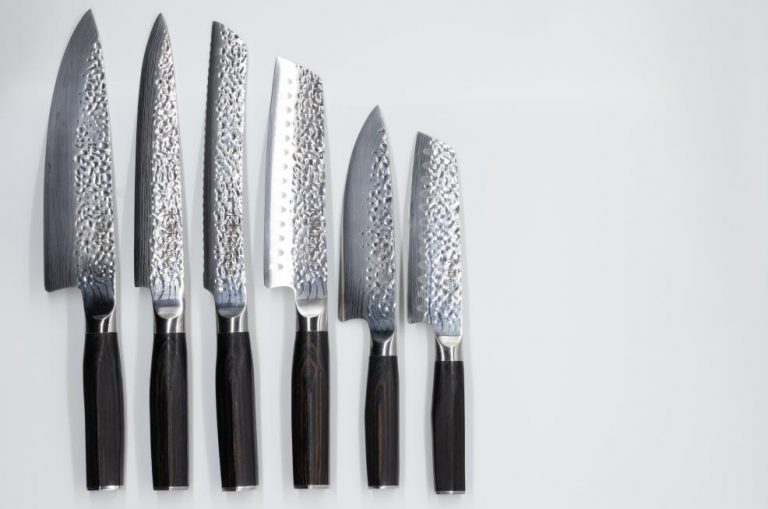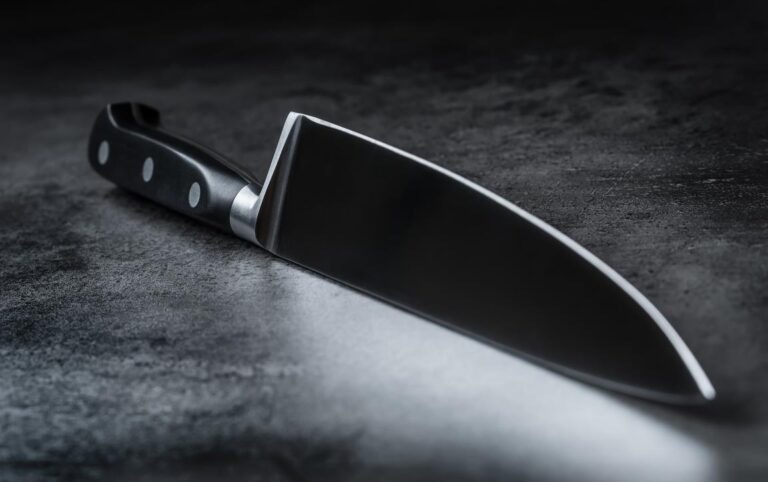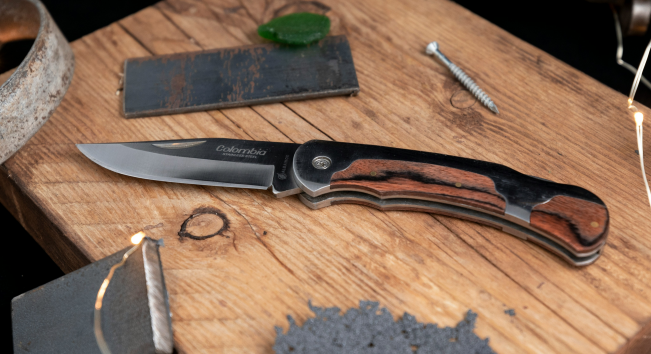If you’ve ever struggled to slice a crusty loaf of bread without squishing it or fought to cut a ripe tomato without mangling the flesh, you’re missing a crucial tool in your kitchen: a serrated knife. But what is a serrated knife, exactly? How is it different from a straight-edge knife, and how should you care for it? This comprehensive guide answers all your questions—plus shares expert tips to make the most of this versatile kitchen essential.
Why Serrated Knives Are a Kitchen Essential
Every kitchen needs tools that solve specific problems, and serrated knives fill a unique niche no straight-edge knife can match. Unlike smooth blades that rely on pressure to slice, serrated knives use sharp, tooth-like notches to “saw” through foods—making them indispensable for cutting items with tough exteriors and soft interiors, or foods that resist clean cuts. From crusty bread to delicate tomatoes, a serrated knife turns frustrating slicing tasks into effortless ones. Whether you’re a home cook, a baking enthusiast, or a casual meal prepper, a high-quality serrated knife is a non-negotiable addition to your utensil drawer.
What Is a Serrated Knife?
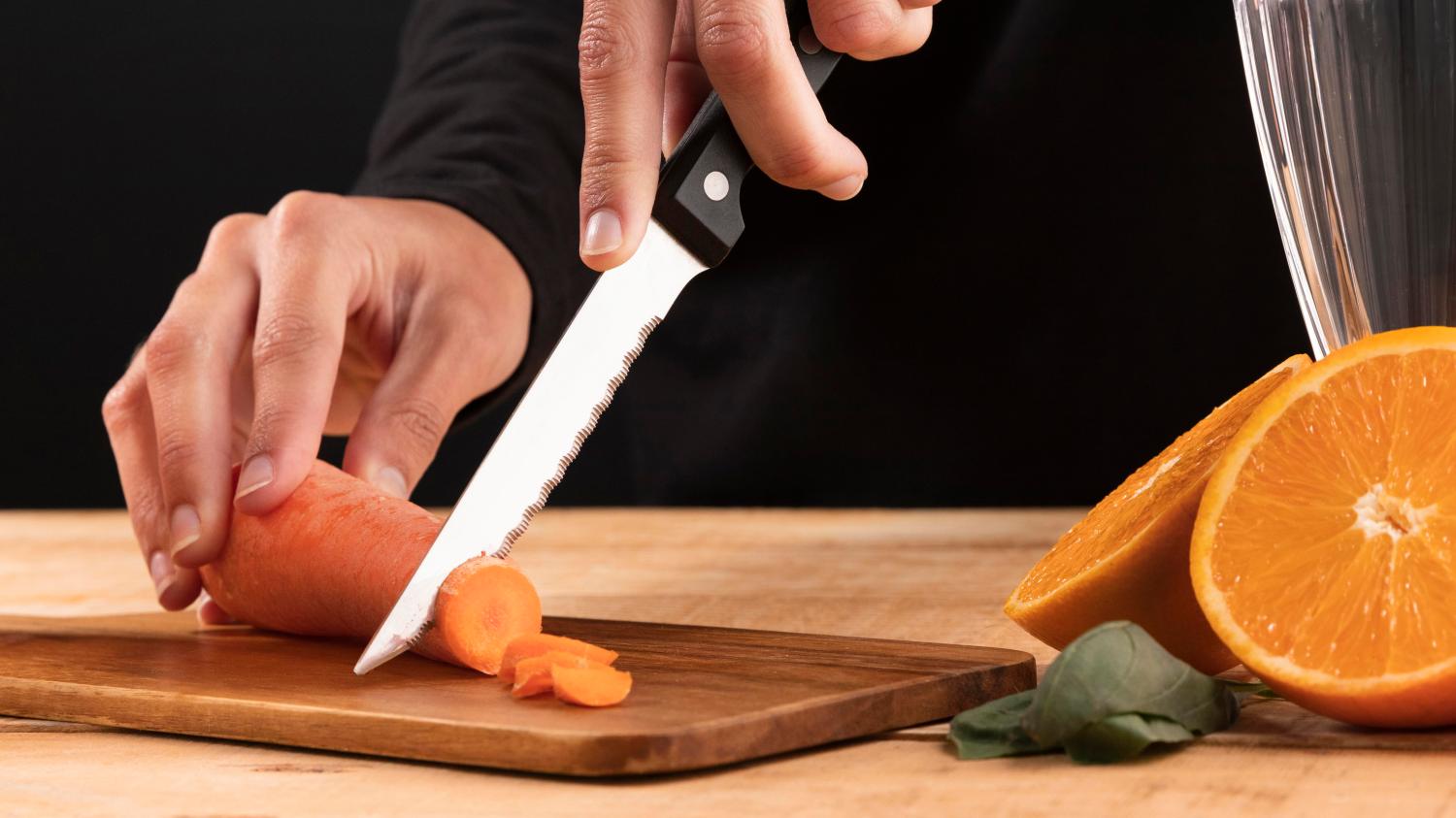
A serrated knife (also called a “toothed knife”) is a cutting tool defined by its blade’s edge: instead of a smooth, continuous surface, it features a series of small, sharp “teeth” or notches. These teeth are engineered to grip and saw through materials rather than relying on downward pressure—making the serrated knife uniquely suited for foods that would crush or tear under a straight-edge blade.
The core structure of a serrated knife includes two key components:
- Serrated Edge: The toothed section, which varies in size (from fine, closely spaced teeth to large, wide-set ones) and shape (pointed for aggressive cutting or blunted for gentler slicing). Each tooth acts as a tiny blade, distributing force evenly to create clean cuts.
- Blade Body: Typically thicker than straight-edge knives to support the serrations, with a rigid design that prevents flexing during sawing motions. The blade connects to a handle optimized for comfort and control.
Buy Wholesale Knives and Start Scaling up with Us Today
Contact us and connect with a sales rep to get a free quote.
Types of Serrated Knives
Not all serrated knives are created equal—different designs are tailored to specific tasks. Choosing the right type ensures you get the best performance for your needs:
Bread Knives
The most iconic serrated knife, bread knives feature a long (8–10 inch) blade with large, deep, and widely spaced serrations. The length allows for full, smooth strokes across loaves, while the wide teeth grip crusty exteriors (like sourdough or bagels) and slice through without compressing the soft, airy interior. Look for a slightly curved blade for easier slicing of round loaves.
Steak Knives
Compact (4–5 inch) blades with small, closely spaced serrations, steak knives are designed for cutting cooked meats (steak, lamb chops, roasts) with minimal effort. The fine teeth create clean, precise cuts without tearing tender meat, and the pointed tip helps pierce through gristle or fat. They’re often sold in sets of 4–6 and may feature ergonomic handles for dining comfort.
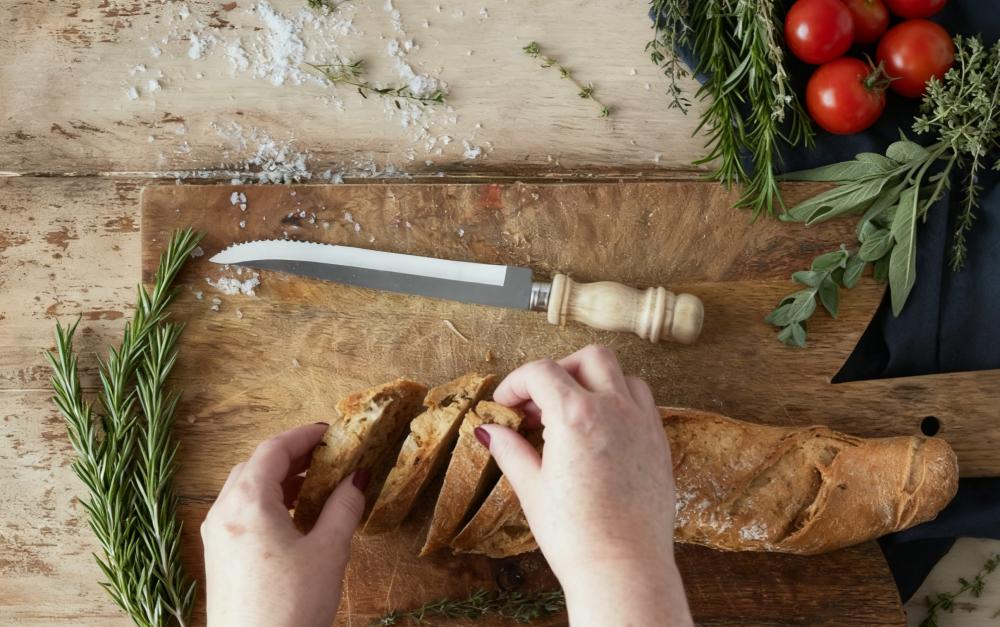
Utility Serrated Knives
A “jack-of-all-trades” tool, utility serrated knives have medium-length (6–7 inch) blades with medium-sized serrations. They’re ideal for slicing sandwiches (without squishing fillings), soft fruits (like pears or mangoes), partially frozen foods (e.g., frozen bread or pizza), and even delicate baked goods (like muffins or scones). Their versatility makes them a favorite for everyday use.
Serrated Paring Knives
Small (3–4 inch) blades with tiny, fine serrations, serrated paring knives excel at peeling and trimming delicate produce. They’re perfect for peeling peaches, plums, or kiwis (where a straight-edge paring knife might slip), trimming the skin off tomatoes, or slicing small citrus fruits (like limes or clementines). Their compact size makes them easy to maneuver for precision tasks.
Buy Wholesale Knives and Start Scaling up with Us Today
Contact us and connect with a sales rep to get a free quote.
Key Characteristics of a Serrated Knife
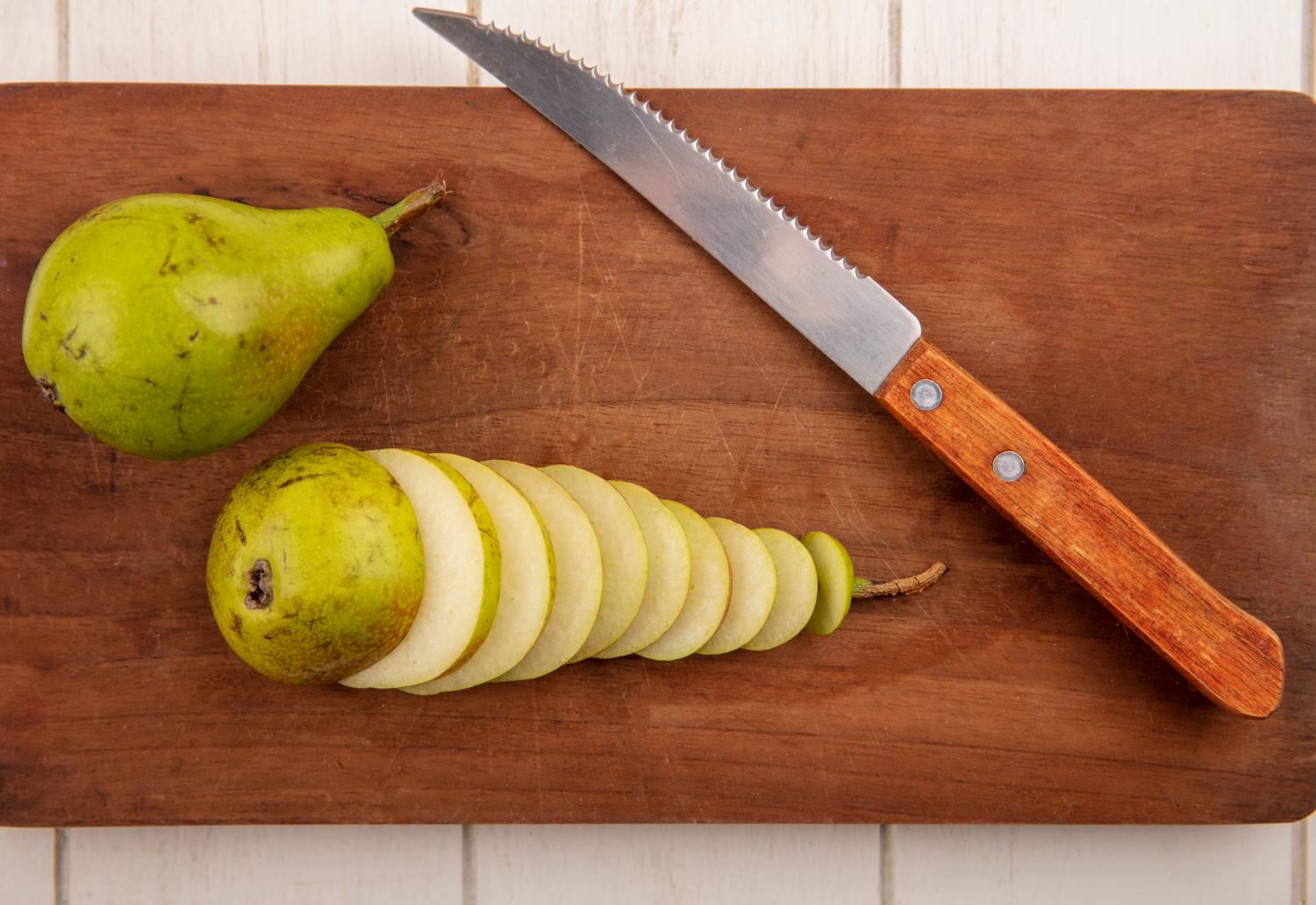
What separates a high-quality serrated knife from a cheap one? Look for these critical features when shopping:
Tooth Design
- Pointed Teeth: Sharp, angular tips that dig into tough surfaces (e.g., crusty bread, steak). Ideal for aggressive cutting but may tear soft foods.
- Blunted Teeth: Rounded tips that glide through delicate items (e.g., cake, ripe tomatoes) without bruising. Better for gentler slicing tasks.
- Spacing: Closely spaced teeth offer precision; wider spacing cuts faster but may leave rougher edges.
Blade Material
- High-Carbon Stainless Steel: The gold standard—sharp, durable, rust-resistant, and easy to maintain. Balances hardness and flexibility.
- Stainless Steel: Affordable and rust-proof but may dull faster than high-carbon options. Good for casual use.
- Ceramic: Ultra-sharp, lightweight, and non-reactive (won’t stain fruits/vegetables). However, brittle—prone to chipping if dropped.
Blade Length & Thickness
- Length: Match to your needs: 8–10 inches (bread), 4–5 inches (steak), 6–7 inches (utility), 3–4 inches (paring).
- Thickness: Thicker blades (2–3mm) offer stability for sawing; thinner blades (1–2mm) are lighter but less durable. Avoid overly thin blades—they may flex or bend.
Handle Ergonomics
A comfortable handle reduces fatigue during repetitive sawing motions. Look for:
- Non-slip grips (wood, rubber, or textured plastic) for safety.
- Full-tang construction (blade extends through the handle) for balance and durability.
- A shape that fits your hand (curved for comfort, straight for control).
Buy Wholesale Knives and Start Scaling up with Us Today
Contact us and connect with a sales rep to get a free quote.
What Is a Serrated Knife Used For?

The serrated knife’s greatest strength is its ability to cut without crushing. Here are its most useful applications:
Baked Goods
Serrations grip the crust of bread, bagels, croissants, or muffins and slice cleanly through without compressing the soft interior. This is their primary use—and where they outperform straight-edge knives entirely.
Tough-Skinned/Soft-Centered Foods
Foods with a hard exterior and tender interior (e.g., tomatoes, peaches, avocados, plums) are no match for serrated knives. The teeth pierce the skin gently, then slice through the flesh without bruising or tearing.
Meats
Fine-serrated steak knives or utility serrated knives slice through cooked meats (steak, roasts, ribs, ham) with minimal effort. They glide through gristle and fat without pulling or shredding the meat.
Other Uses
- Frozen Foods: Partially frozen bread, pizza, or vegetables—serrations cut through ice crystals more easily than straight blades (avoid fully frozen items, which can chip serrations).
- Citrus: Serrations grip the rind of oranges, lemons, or grapefruits, making it easy to slice or zest without slipping.
- Cake Layers: Blunted-serrated knives create even, crumble-free slices of cake or layer cakes.
- Sandwiches: Slices through stacked ingredients (meat, cheese, veggies) without squishing the bread or oozing fillings.
Buy Wholesale Knives and Start Scaling up with Us Today
Contact us and connect with a sales rep to get a free quote.
Serrated Knife vs Straight-Edge Knife: When to Choose Which?
Confused about when to reach for a serrated knife vs. a straight-edge knife (e.g., chef’s knife, paring knife)? Here’s a simple rule of thumb:
| Scenario | Choose a Serrated Knife | Choose a Straight-Edge Knife |
|---|---|---|
| Cutting crusty bread, bagels, or croissants | ✅ | ❌ (crushes soft interior) |
| Slicing tomatoes, peaches, or avocados | ✅ | ❌ (tears flesh) |
| Cutting cooked steak, roasts, or ribs | ✅ | ❌ (requires more pressure) |
| Chopping, dicing, or mincing vegetables | ❌ | ✅ |
| Slicing soft, uniform foods (chicken breast, cheese blocks) | ❌ | ✅ |
| Peeling hard-skinned fruits (apples, potatoes) | ❌ | ✅ |
In short: Serrated knives excel at “sawing” motions, while straight-edge knives thrive at “rocking” or “gliding” cuts for chopping, dicing, or slicing soft, even foods.
Buy Wholesale Knives and Start Scaling up with Us Today
Contact us and connect with a sales rep to get a free quote.
Expert Maintenance Tips for Serrated Knives
A well-maintained serrated knife will last for years—follow these tips to keep it sharp and functional:
Cleaning
- Always hand-wash: Serrated edges trap food particles, which dishwashers can’t fully remove (leading to bacteria buildup). Use warm, soapy water and a soft sponge to clean between the teeth.
- Dry immediately: Moisture can cause rust (especially in carbon steel blades). Pat the blade dry with a towel right after washing.
- Avoid abrasive cleaners: Steel wool or harsh detergents can scratch the blade and dull serrations.
- Use a serrated knife sharpener: Standard sharpening stones won’t work—serrations require a tapered rod (for manual sharpening) or an electric sharpener designed specifically for serrated blades.
- Sharpen only when needed: Dullness is obvious when the knife tears food instead of slicing. Over-sharpening wears down the teeth and shortens the knife’s lifespan.
- Consider professional sharpening: For high-end knives, professional sharpeners can restore serrations to their original sharpness (worth the investment every 1–2 years).
Storage
- Protective sheaths: Most serrated knives come with plastic or leather sheaths—use them to prevent serrations from chipping or dulling in drawers.
- Knife blocks: Choose blocks with serrated-specific slots (wider than straight-edge slots) to avoid crowding the teeth.
- Magnetic strips: A safe, space-saving option—mount the knife with the serrated edge facing away from other tools to prevent contact damage.
- Never store loose in drawers: Tossing serrated knives in drawers with other utensils will dull the teeth and risk chips.
Avoiding Common Damages
- Don’t cut hard surfaces: Glass, stone, metal, or ceramic cutting boards will chip or bend serrations. Stick to wood, bamboo, or plastic boards.
- Avoid prying or twisting: Serrated blades are fragile—never use them to pry open packages, twist off bottle caps, or cut bones (unless the knife is specifically designed for it).
- Don’t cut frozen foods: Fully frozen items (e.g., frozen steaks, ice) can crack the blade or chip serrations. Thaw foods partially first.
Buy Wholesale Knives and Start Scaling up with Us Today
Contact us and connect with a sales rep to get a free quote.
Frequently Asked Questions
Q: Can I sharpen a serrated knife at home?
A: Yes—with the right tools. Use a tapered sharpening rod (inserted into each serration to sharpen individual teeth) or an electric sharpener made for serrated blades. Avoid standard sharpening stones—they won’t reach the curved edges of the teeth.
Q: How long do serrated knives last?
A: High-quality serrated knives (made of high-carbon steel) can last 5–10 years with proper maintenance. Cheaper stainless steel models may last 2–3 years before serrations dull permanently. Ceramic serrated knives can last decades but are prone to chipping if dropped.
Q: Are serrated knives dangerous?
A: No more dangerous than straight-edge knives—if used properly. The serrated edge can grip skin more easily, so always keep fingers away from the blade, use a cutting board, and avoid slippery surfaces. Never run your hand along the serrated edge (even if you think it’s dull).
Q: Can serrated knives cut through bones?
A: No—most serrated knives (bread, steak, utility) are not designed for bones. Cutting bones will chip serrations, bend the blade, or even break it. Use a dedicated bone knife or cleaver for cutting bones.
Q: Are serrated knives better than straight-edge knives?
A: Not “better”—just different. They excel at specific tasks (slicing bread, tomatoes, steak) where straight-edge knives fail, but they’re useless for chopping, dicing, or mincing. The best kitchens have both!
Q: Do I need multiple serrated knives?
A: It depends on your cooking habits. A bread knife and a set of steak knives are essentials for most homes. If you frequently cook with soft fruits/vegetables, add a serrated paring knife. A utility serrated knife is a great all-purpose addition for everyday use.
Conclusion: Investing in the Right Serrated Knife
A serrated knife is far more than a “bread knife”—it’s a versatile tool that solves common kitchen frustrations and elevates your cooking experience. Now that you know what a serrated knife is, its key types, characteristics, uses, and how to maintain it, you can choose the perfect one for your needs.
For European and American wholesalers, retailers, and brand owners, the quest for high-quality serrated knives doesn’t end with knowing what to look for—it starts with partnering with a reliable manufacturer that delivers on quality, customization, and value. If you’re looking to source premium Chinese-manufactured serrated knives for your business, Leeknives is your ideal partner. We specialize in wholesale, OEM, and private label services tailored to your brand’s needs—whether you need custom blade designs, branded packaging, or bulk orders that balance quality and cost-effectiveness.
Ready to upgrade your product lineup and stand out in the competitive kitchenware market? Head to Leeknives’ request-a-quote page to claim your free, no-obligation quote today. Let’s build something great together—one precision serrated knife at a time.
